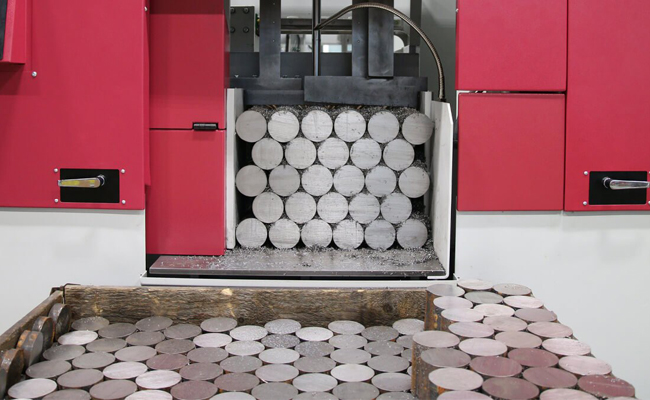BS-2114TH Metal Cutting Bandsaw
Cutting Capacity :
The following is a frequently asked question (FAQ) about metal sawing machines for your reference:

Bandsaw Machine: Suitable for cutting large cross-section metals with high efficiency and smooth cuts.
Circular Saw Machine: Ideal for high-speed cutting of small cross-section metals (e.g., pipes, rods).
Hacksaw Machine: Traditional equipment for simple cutting but with lower efficiency.
Cold Saw Machine: Low-speed cutting with no thermal deformation, offering high precision.
Material Compatibility:
Carbon steel blades: Best for soft metals (aluminum, copper).
Bi-metal blades: Versatile, suitable for stainless steel and alloy steel.
Carbide-tipped blades: Used for high-hardness materials (e.g., titanium alloys).
Tooth Pitch (TPI):
Coarse teeth (3-6 TPI): For thick materials.
Fine teeth (10-24 TPI): For thin-walled pipes or precision cutting.
Causes & Solutions:
Insufficient blade tension → Adjust to the recommended tension.
Worn blade or incorrect tooth pitch → Replace the blade.
Excessive feed rate → Reduce feed pressure.
Workpiece not clamped properly → Check fixture stability.
Routine Maintenance:
Clean metal chips to prevent clogging.
Check hydraulic/oil levels.
Lubricate guide rails and bearings regularly.
Long-term Maintenance:
Replace worn belts and gears.
Calibrate blade guide alignment.
Loose or uneven blade tension.
Incorrect blade selection (e.g., too fine tooth pitch).
Machine instability or vibration from the foundation.
Use appropriate cutting fluid (e.g., emulsion to reduce friction).
Avoid sudden speed changes or overloading.
“Break in” new blades: Use slower feed rates for the first few cuts.
Wear protective gloves and goggles.
Never remove chips by hand (use a brush or tool).
Adjust the blade or workpiece only when the machine is stopped.
Automated cutting with high precision (±0.1mm).
Programmable for repetitive tasks, ideal for batch production.
Supports complex angle cuts (e.g., miter cuts, multi-step cutting).
Check power supply and emergency stop switch.
Verify hydraulic/pneumatic system pressure.
Inspect motor or controller for faults.
For more specific issues (e.g., error codes for certain brands/models), please provide details for further assistance!
Cutting Capacity :
Cutting Capacity :